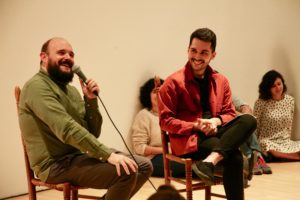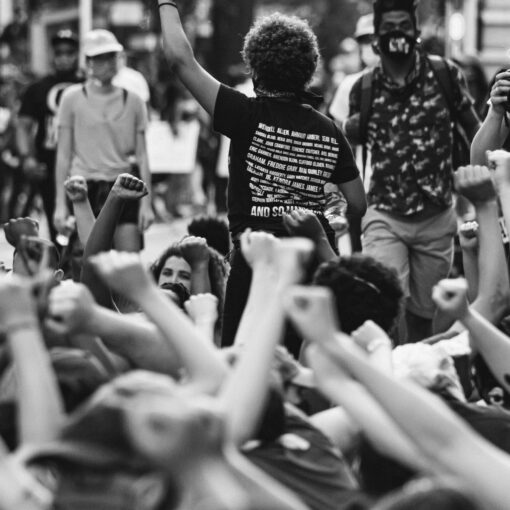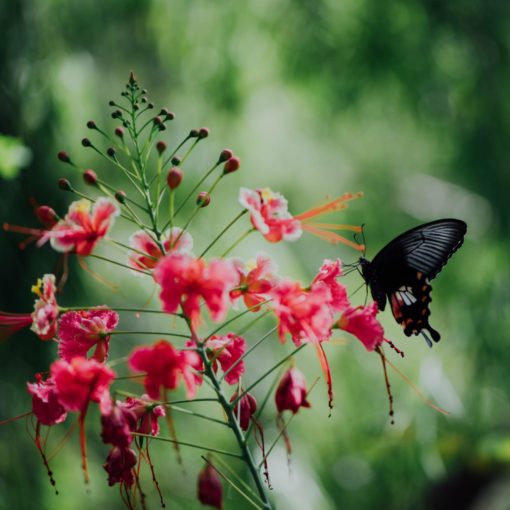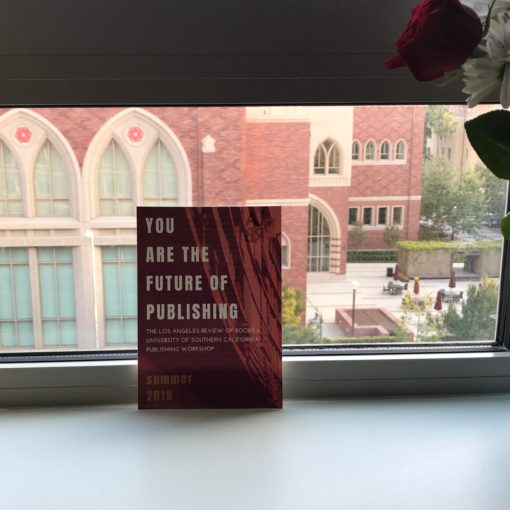This is the third and final post in a three-part series by PhD student and Mellon Humanities Public Fellow Daniel Valtueña about his experience curating the project En un cuartito los dos in the James Gallery at The Graduate Center, City University of New York.
Post 1: What More Could a Final Paper Do?
Post 2: Between Legitimation and Limitation
Artist Niño de Elche performs at The James Gallery, The Graduate Center, City University of New York on 2 May 2019.

One of the things I admire about the artists I do my research on is how physically engaged they are with the ideas they bring to the stage. Performers, musicians, and dancers collaborate to push the physical limits of their bodies in order to explore alternative modes of expression. They are not afraid of working together and exposing to others how fragile and vulnerable their practices––and their bodies––might be. This is not the case for most of the academics I know––even myself, to be honest. Unfortunately, the culture of academia does not reward the intellectual and even physical vulnerability required by such radical collaboration.
As a researcher mainly interested in the performing arts, attending shows is crucial for my work. For me, conducting research means not only getting to know artists, but also contributing to their creative processes. Working hand in hand with performing arts professionals increases the visibility of my work and also contributes to the feeling that I belong to a community outside the academy. However, in order for this to work, I must consciously relinquish control of my arguments by letting the artists shape them, too.
In the course of En un cuartito los dos, the artist Niño de Elche spent three days in the James Gallery at The Graduate Center. He shared the outcomes of his artistic residency through a public performance where people could closely follow his practice and then interrogate his artistic research in a follow-up conversation.
After fifteen months working on this project, I was happy to see that about a hundred people from both inside and outside The Graduate Center community came to the performance. Niño de Elche pushed the limits of sound in an incredible intervention that moved many people in the audience. Their reactions were so unexpected and compelling, in fact, that during the show I was almost more interested in watching them than in watching him.
The audience’s reaction reminded me of the importance of physical engagement and human interaction for the production of knowledge. In fact, after the performance people of all ages and from different backgrounds were interested in sharing their thoughts and comments with the artist. The opportunity to share their ideas was something the audience felt extremely grateful for. It gave them the impression the project belonged to them, and in fact, it actually did.
At the end of the conversation I spoke to the audience and drew their attention to a little paragraph in the program that acknowledged all the people and institutions involved. For me, this

was not a pro forma statement but a sincere feeling of gratitude for everything people had done for the project. But collaborating, for me, didn’t just mean a long list of names or a better budget; what motivated me about collaboration was the idea of taking risks together. Just like performers and artists do when conducting their artistic practice, curating En un cuartito los dos was for me a way of physically getting in touch with my case of study and interacting with a large number of individuals and institutions who wanted to be involved as well.
Although En un cuartito los dos started out as a research paper that I wrote by myself, the final production had multiple “authors.” In a similar way to how bodies might feel fragile on stage, my research became more vulnerable as I introduced other voices and agents to the project. When working individually, as we academics usually do, it is easy to maintain control. However, the more other people assumed my research as theirs, the more I felt I was contributing to Niño de Elche’s practice. At the beginning, this felt a little bit scary but as soon as I realized my research did not exclusively belong to me, I started to enjoy the collaboration much more.
Working together with an artist such as Niño de Elche was an extraordinary experience for me as a researcher. It made me question my positionality as an academic and the importance of artistic modes of inquiry. But I think the most important outcome was seeing how people came together around Niño de Elche’s artistic practice. This demonstrated to me that sharing ideas and emotions with individuals inside and outside the academy should be a significant priority if we want to make our research influential and meaningful to a broader community.
Daniel Valtueña thanks Stacy Hartman and Anthony J. Harb for their writing advisement on this text.
 Daniel Valtueña is a PhD student in the Department of Latin American, Iberian, and Latino Cultures. He earned his BA in Art History at Universidad Complutense de Madrid and his research focuses on contemporary Iberian cultures and queer theories. His work explores the notion of celebration from both theoretical and curatorial perspectives, and his dissertation will address contemporary Iberian artistic practices in the intersection of queer and national identities. In 2012 he was awarded the Certamen Nacional Jóvenes Investigadores by the Spanish Government for his early research initiatives and received the Premio Talento Joven in the category of Culture by the Madrid Region in 2015 for his arts management trajectory. Daniel is also a curator based in New York and Madrid. Follow him on Instagram at @danielvaltuena.
Daniel Valtueña is a PhD student in the Department of Latin American, Iberian, and Latino Cultures. He earned his BA in Art History at Universidad Complutense de Madrid and his research focuses on contemporary Iberian cultures and queer theories. His work explores the notion of celebration from both theoretical and curatorial perspectives, and his dissertation will address contemporary Iberian artistic practices in the intersection of queer and national identities. In 2012 he was awarded the Certamen Nacional Jóvenes Investigadores by the Spanish Government for his early research initiatives and received the Premio Talento Joven in the category of Culture by the Madrid Region in 2015 for his arts management trajectory. Daniel is also a curator based in New York and Madrid. Follow him on Instagram at @danielvaltuena.







